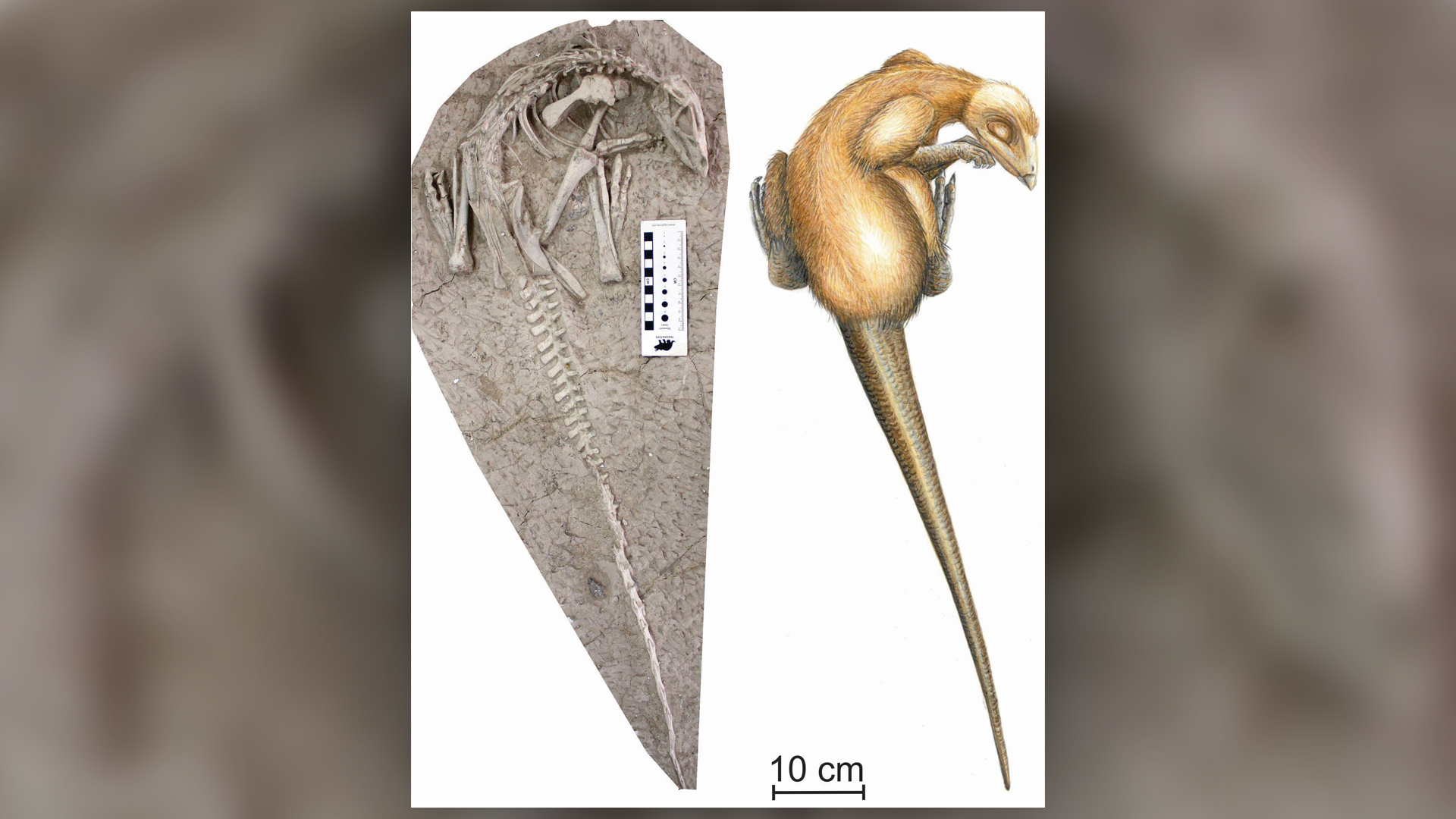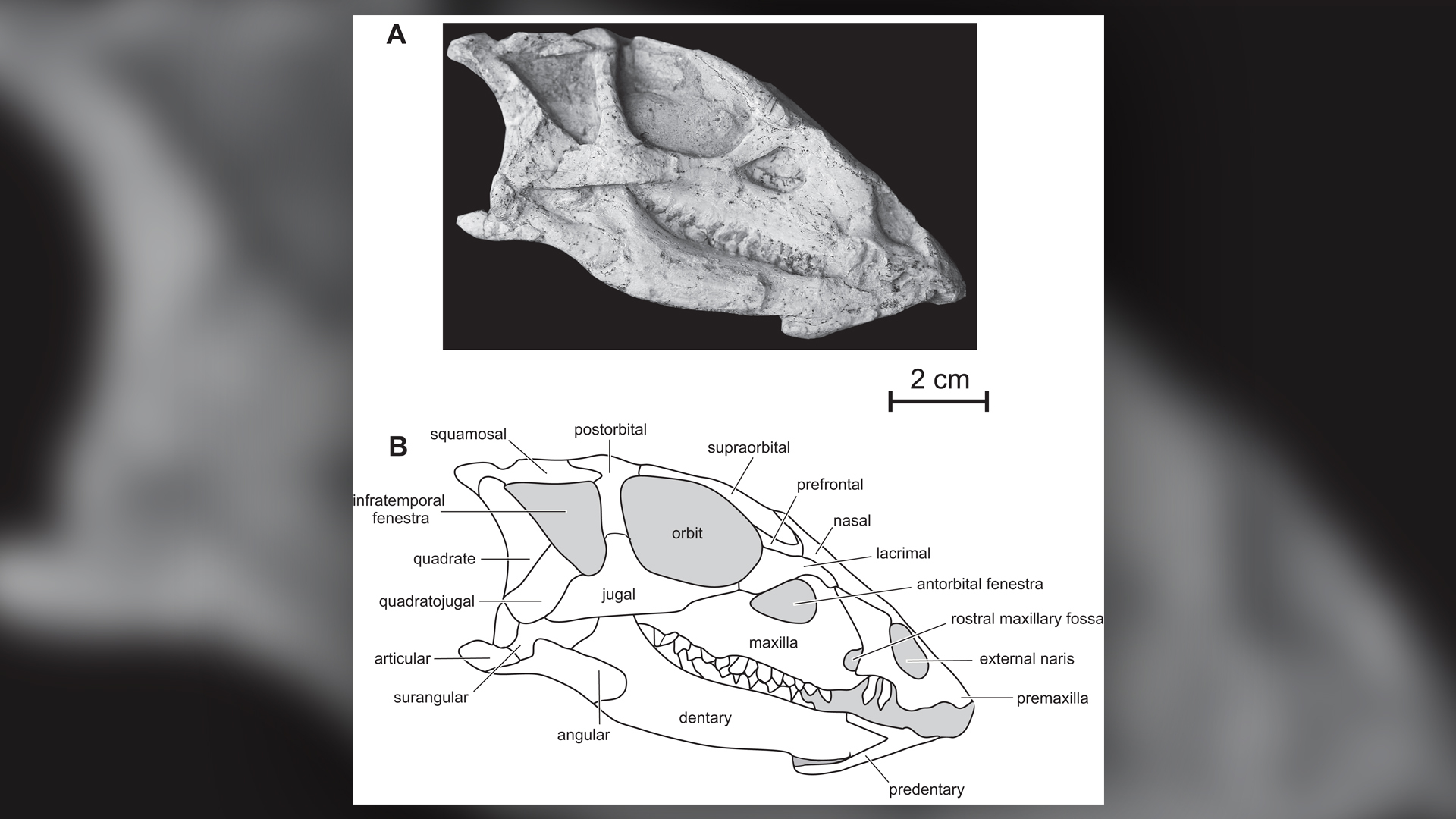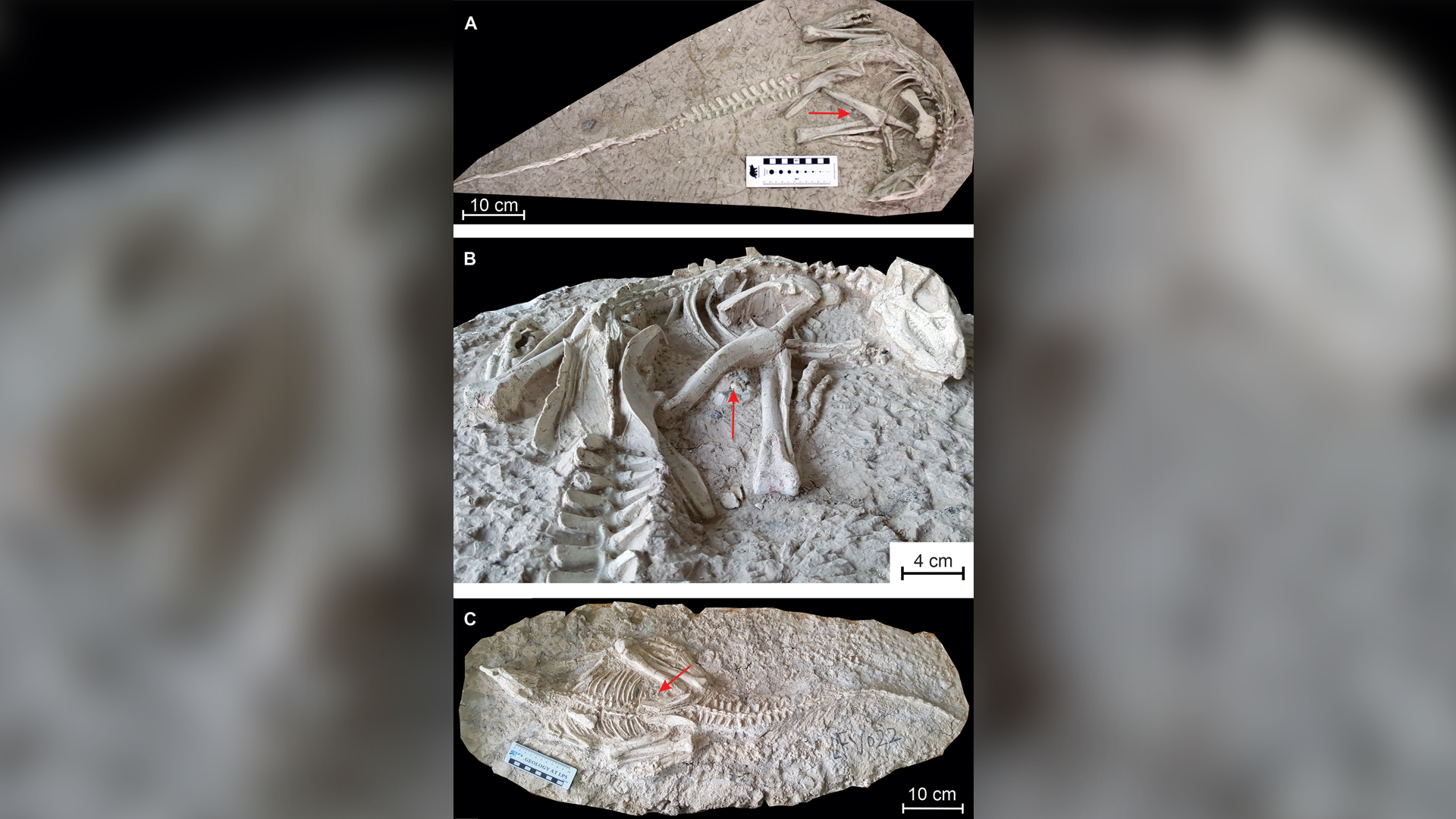New 'eternal sleeper' dinosaur species was entombed while still alive
Chinese farmers found the two amazing fossils.

About 125 million years ago, two dinosaurs that had likely dozed off in an underground burrow drew their last breaths before they were buried alive, possibly by a volcanic eruption, a new study finds.
The pristinely preserved remains of these two nearly 4-foot-long (1.1 meters) reptiles looked so serene that researchers named the newly discovered species Changmiania liaoningensis, which means "eternal sleeper from Liaoning" in Chinese.
"It is tentatively hypothesized that both Changmiania liaoningensis specimens were suddenly entrapped in a collapsed underground burrow while they were resting, which would explain their perfect lifelike postures" and why their remains weren't damaged by the elements or by scavengers, the researchers wrote in the study.
Related: Photos: Newfound tyrannosaur had nearly 3-inch-long teeth
Chinese farmers in Liaoning province in northeastern China discovered the two specimens, which are now housed at the Paleontological Museum of Liaoning. An international team of paleontologists from China, Argentina and Belgium then set to work studying the "eternal sleeper's" unique anatomy.
Their analysis revealed that C. liaoningensis was an early ornithopod, a type of herbivorous dinosaur that walked on two legs, such as Iguanodon and the hadrosaurs, or duck-billed dinosaurs. Judging by its powerful hind legs and long, stiff tail, it's a good bet that C. liaoningensis was a swift runner, the researchers said.
Moreover, C. liaoningensis was likely an expert burrower, which is uncommon among dinosaurs but not without precedent.
Get the world’s most fascinating discoveries delivered straight to your inbox.
"Certain characteristics of the skeleton suggest that Changmiania could dig burrows, much like rabbits do today," study senior researcher Pascal Godefroit, a paleontologist at the Royal Belgian Institute of Natural Sciences, said in a statement. "Its neck and forearms are very short but robust, its shoulder blades are characteristic of burrowing vertebrates and the top of its snout is shaped like a shovel."

The Lujiatun Beds, where these fossils were found, are well known for extraordinary fossils — specimens thought to have been preserved by an ancient volcanic eruption, like a Cretaceous period version of Pompeii (the Roman city that was destroyed but eerily preserved by an eruption from Mount Vesuvius in A.D. 79). Other 3D fossils from this site provide evidence that some dinosaurs were devoted parents, and that mammals the size of opossums once feasted on tiny dinosaurs.
In the case of the two C. liaoningensis dinosaurs, "it can be hypothesized that the burrows containing the Changmiania skeletons collapsed during the debris flow episode; we can alternatively imagine that the Changmiania specimens dug their burrow in unstable reworked volcanic material just after the debris flow," the researchers wrote in the study, adding that "those explanations, of course, remain pure speculations," because the fossils were excavated by farmers, not scientists, so certain details about the location weren't studied.
Still, the burrowing dinosaur's lifelike posture "implies that the animals were rapidly entombed while they were still alive," although it's possible the sediment covered them soon after death, the researchers wrote in the study.
The C. liaoningensis fossils reveal other hints about their lives. For instance, unlike another dinosaur immortalized in the Lujiatun Beds — Mei long, a bird-like troodontid dinosaur that slept with its tail curled under its neck — C. liaoningensis slept with its tail stretched out. That's because the "eternal sleeper" had a "rather rigid" tail with limited flexibility, the researchers wrote in the study. "Curling its tail under its neck in a Mei-like style was therefore likely impossible for Changmiania."
Another fossilized clue includes a cluster of a dozen small pebbles found near the stomach area of one of the C. liaoningensis individuals. These pebbles may have been gastroliths, or rocks that some animals swallow on purpose to help grind food during digestion, the researchers said.
The study was published online Sept. 8 in the journal PeerJ.

Originally published on Live Science.

Laura is the managing editor at Live Science. She also runs the archaeology section and the Life's Little Mysteries series. Her work has appeared in The New York Times, Scholastic, Popular Science and Spectrum, a site on autism research. She has won multiple awards from the Society of Professional Journalists and the Washington Newspaper Publishers Association for her reporting at a weekly newspaper near Seattle. Laura holds a bachelor's degree in English literature and psychology from Washington University in St. Louis and a master's degree in science writing from NYU.


